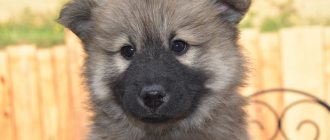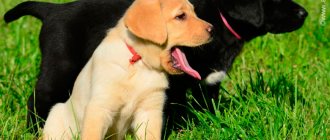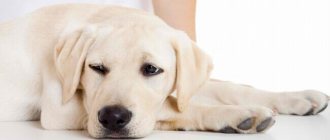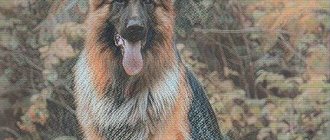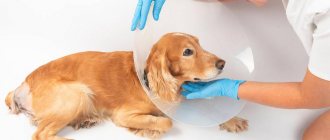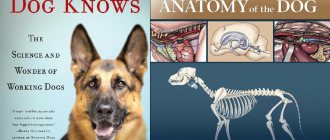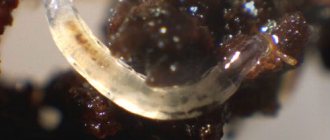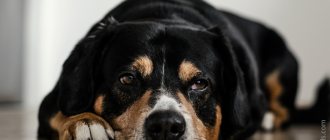Rickets in dogs is a disease of individuals under one year of age, regardless of breed, which is characterized by impaired bone formation and skeletal deformation. It can also occur in adult dogs, but is extremely rare. As a rule, there will be talk about osteomalacia. All this is a consequence of metabolic disorders due to a lack of vitamin D (this includes ergocalciferol D2 - cholecalciferol - D3, etc.).
If you think that you can just start feeding your dog more vitamins and all your problems will be solved, then you are mistaken. This vitamin is not so simple, and the cause of the disease may lie deeper than it seems. Vitamin D itself in its pure form has no effect on the development of rickets. Now let's figure it all out.
Description of the disease
The elements that are responsible for healthy bone development are calcium and phosphorus, the absorption of which is carried out under the influence of the active form of vitamin D2 and D3. Thus, rickets develops when the metabolism of calcium and phosphorus is disturbed. These elements must be supplied with food in the required quantities.
A deficiency or excess of one of these substances is detrimental to the body. Normally, the ratio between calcium and phosphorus should be from 1.5:1 to 2:1, respectively.
Vitamin D is fat soluble, meaning it will not be absorbed without sufficient fat in the diet. Vitamins of group D are activated only under the influence of ultraviolet rays: sunlight or artificial UV radiation. Form D2 is formed under the influence of radiation in products of plant origin and enters the dog’s body with food. And D3 is synthesized under the influence of ultraviolet rays directly in the body.
It is the D3 form that is most actively involved in the absorption of the amount of calcium needed by the body, and therefore fights rickets.
Preventive measures
Preventive measures include taking antirachitic drugs, proper nutrition, care and moderate physical activity. To prevent rickets, your pet is given vitamin D2 in the form of an oil solution or diluted with alcohol. The dosage is selected individually by a veterinarian. Crushed egg shells, ground into powder, are used as a mineral supplement. Chalk and fetin, fortified fish oil, may be prescribed. For large puppies, the standard dosage is doubled. After every 20 days of use, a 10-day break is taken.
Bitches should receive up to 2 grams of phosphate + calcium salts, small puppies - from 0.1 to 1.5 grams, depending on the need and age. The main prevention is to walk more in the sun and eat right. It is better to use balanced professional food, and not to feed products not approved by a veterinarian. Feeding bitches against rickets is mandatory from the first day after mating, and is given throughout the entire feeding period of the puppies. When the babies are taken away from their mother, they also begin to be given this supplement. Puppies are “artificial”, premature or weak should receive medications from birth.
Causes of rickets
Insufficient intake of provitamins D (vitamin precursors from which active forms are formed) from food. Because of this, the necessary micro- and macroelements are not absorbed.
Lack, excess or incorrect ratio of calcium and phosphorus in the diet.
Lack of sunlight. If the dog is constantly in a closed enclosure, or is kept exclusively in an apartment.
Excessive or insufficient amounts of fats, proteins, carbohydrates, vitamins and microelements (iron, copper, iodine, etc.) supplied with food. A disruption in the supply of these components entails a failure in the entire metabolism. And for a growing puppy’s body, this is a threat to bone formation - rickets.
If a puppy gets an infectious disease, such as plague, or any inflammatory process in the body, from bronchitis to enteritis, also entails metabolic disorders. And, as a result, rickets develops.
Newborn puppies mainly receive the necessary elements from colostrum and mother's milk. If you are feeding your newborn puppy with artificial milk replacers, you should make sure that they contain D3 and other necessary elements. Artificial cultivation is a common cause of the development of rickets.
Symptoms of rickets
In the initial stage:
- The puppy seems “lethargic”, but the general condition can be described as satisfactory.
- The quality of the coat deteriorates, the skin is dry and less elastic.
- Appetite decreases or a perversion of appetite develops, with the puppy licking or even trying to eat inedible objects. This can sometimes be seen as puppies licking each other, so you may think it's cute, but it may be a warning sign and you should keep a close eye on your puppies.
- Constipation or diarrhea may indicate a metabolic disorder.
- Tense gait, rapid and frequent stepping from paw to paw.
- Fractures, and spontaneous ones.
- Lameness.
In severe stages:
- The puppy behaves apathetically, tries to lie down as long as possible and not get up.
- The wool is matte, very poor quality. The skin is dry and inelastic.
- A child with rickets is noticeably behind in growth compared to his peers of the same age.
- Appetite is sharply reduced or distorted. It manifests itself more strongly than in the initial stage, in this case the dog can eat soil, rags, paper, and coprophilia develops (when the dog eats feces).
- Due to the symptoms described above and metabolic disorders, gastritis and other problems with the gastrointestinal tract develop.
- Diarrhea alternates with constipation.
- Due to softening of the bones, deformations are observed. The spine sags under the weight of the muscles. It turns out that the spine is curved downward, this is called lordosis. The limbs, usually clearly marked on the front legs, bend inward or outward, thus taking the shape of the letter “O” or “X”. The costal processes become soft. You can feel the so-called “rosary” on the dog’s ribs. The last caudal vertebrae may be resorbed.
- Teeth may fall out.
- The dog is rapidly losing weight, and the body is exhausted.
Possible complications
The most serious thing that threatens a sick animal is pathological fractures due to severe curvature of the bones and “washing out” of calcium from them. In addition, the deformed skeleton is not able to support the normal functioning of the dog, and it will have problems with mobility and difficulties in socialization. Crooked, damaged limbs will not allow the dog to lead a normal active lifestyle.
If the disease is advanced, the animal may become disabled. Rickets can lead to disruption of the functioning of internal organs, especially the cardiovascular system.
Treatment
In puppies, if you start treatment on time, you can achieve one hundred percent success!
Diagnostics
An external examination is not enough to make a diagnosis, although it already says a lot. A competent doctor collects information about the puppy’s care—analyzes the dog’s diet and exposure to sunlight or the presence of artificial ultraviolet radiation.
It is necessary to conduct laboratory blood tests. With vitamin D deficiency in the blood, the following is found:
- lack of calcium and phosphorus;
- increased activity of the enzyme Alkaline Phosphatase (ALP);
- reserve alkalinity changes;
- increased acidity in the blood (ph);
- with an exacerbation of the inflammatory process, an increase in leukocytes is detected in the blood, namely neutrophils - neutrophilic leukocytosis;
- hypochromic anemia (lack of chromium) may occur;
An x-ray will also need to be taken.
First aid
The first thing you should do for your pet is to go to a veterinarian who will confirm the diagnosis of rickets and prescribe you the necessary medications. Do not self-medicate.
Drugs
Treatment must be comprehensive. It is necessary to adjust feeding, living conditions and introduce vitamin and mineral supplements. The use of the following drugs is recommended:
- Ergocalciferol (the dosage and regimen of this drug is prescribed individually, depending on the stage and type of disease).
- Tetravit, retinol, and others.
- Mineral supplements: calcium gluconate, bone and meat and bone meal, fish oil (25 - 30 ml), tricalcium phosphate and others.
- Calcium supplements, such as Brevex.
If left untreated, the disease will definitely not go away on its own, and the dog will eventually become disabled. Skeletal deformation will eventually begin to interfere with the normal functioning of the circulatory, respiratory and other internal systems of the body, which invariably leads to death.
What to do at home
If a puppy is diagnosed with rickets, it is equally important for the owner to avoid two extremes - to pamper the dog in every possible way, not allowing him to move, so as not to increase the curvature of the bones, or, on the contrary, to “drive” him too intensely in order to strengthen the muscles.
It is important to use the right professional food, give the dog adequate physical activity, do not forget about the need for ultraviolet radiation for health, but do not keep the animal under the scorching rays of the sun - this can cause burns and even sunstroke.
If there are many puppies and the weak ones are abused, the owner will have to feed the baby separately so that he gets a full portion and grows strong and strong.
Nutrition and care
Plays a key role in the dog's recovery. The puppy should be kept in a bright and dry room. He just needs long walks in the fresh air and always under the sun. If this is not possible, artificial UV irradiation procedures using quartz lamps should be prescribed.
The feed should be easily digestible and contain the required amount of calcium and phosphorus. D3 must be present in the diet.
If you feed your dog “natural” food, you must introduce the following products:
- calcined cottage cheese;
- fresh meat;
- vegetables, especially carrots;
- eggs;
- chalk.
If you stick to commercial food, you may need to change the food, which has a composition of vitamins and minerals that is more suitable for removing the body from a pathological condition.
Risk group
Any dog can get sick, regardless of breed. Mostly puppies get sick, but there are cases when rickets affects adults, in which case everything is more complicated.
At risk:
- Large breed dog puppies. The fact is that babies of large breeds grow very quickly, and bone tissue does not have time to develop. Therefore, their nutrition needs to be monitored especially carefully and vitamin-mineral complexes introduced.
- Dogs kept in unfavorable conditions or in dark enclosures without walking are certainly susceptible to hypovitaminosis, and as a result, rickets.
- Puppies born from a mother who did not receive sufficient balanced nutrition during pregnancy.
- Puppies fed on low-quality milk replacers.
- Individuals who have recovered from infectious diseases (plague) or other diseases that have adversely affected their metabolism.
- If the dog does not receive a balanced diet, he is definitely at risk.
Prevention
- The basis of prevention is timely visits to the veterinarian and vaccination.
- Monitor the development of your little pet.
- Balanced feeding. When feeding a dog natural food, vitamin and mineral supplements are necessary. And dry food must be premium and super-premium, in other words, with a guarantee of quality. And make sure that the composition contains D3 or cholecalciferol (the name of this vitamin), as well as a sufficient amount of calcium and phosphorus in the correct 2:1 ratio.
- Sufficient access to sunlight, active walks.
FAQ
What can you do to make dogs' paws straighter?
Contact your veterinarian to confirm and identify the stage of rickets. Adjust nutrition, introduce vitamin and mineral supplements. Spend more time with your dog in the sun.
What vitamins for dogs against rickets?
Vitamins D are needed - cholecalciferol and ergocalciferol. And also, products and supplements containing calcium and phosphorus. For example, drugs Brevex, trivitamin, retinol, fish oil, etc.
What is the life expectancy of dogs with rickets?
If the puppy is treated on time, he will fully recover and his lifespan will not differ in any way from dogs that have never suffered from rickets. If an adult dog is sick, it is unlikely that it will fully recover after treatment. But with proper care, it will live its full, long life.
But if you do not take any action to cure your pet, then very soon he will become disabled. Over the course of a year, the skeleton will change beyond recognition and eventually the internal organs will be affected. Without care, such a puppy will not live to see adulthood.
List of drugs
In the treatment of rickets, the following groups of drugs are used:
- Vitamin.
- Ergocalciferol (D)
- Trivitamin (ADE).
- Tetravit (ADEF).
- Milgamma. Multivitamin preparation with analgesic effect.
- Mineral:
- Calcium borogluconate.
- Cyanophore. Source of phosphorus.
- General stimulating:
- Katozal.
- Gamavit.
- Chondroprotectors. Substances that promote cartilage restoration:
- Arthroglycan.
- Stride plus.
- Nutritional supplements:
- Beaphar Salvical.
- Tricalcium phosphate.
Milgamma
Briefly about the main thing
- Rickets is a disease, mainly in puppies, caused by metabolic disorders and manifested by skeletal deformation.
- The cause of this disease may be: lack of vitamin D, incorrect ratio of calcium and phosphorus in the diet, infection with infectious diseases.
- The main symptoms of rickets: lameness, decreased motor activity, growth retardation, skeletal deformation, especially of the limbs.
- For treatment it is necessary to: adjust nutrition, add vitamins and minerals to the diet. Increase access to sunlight or organize training with artificial ultraviolet light, for example, using quartz lamps.
- At risk are large breed puppies, as well as dogs that do not receive a balanced diet and are kept in unfavorable conditions.
Results of the disease
Rickets in young dogs passes without consequences only in cases of timely intervention by a doctor and correctly selected treatment at the first manifestations of the disease. With the help of massage, you can correct the curvature of the paws and posture, and strengthen the muscles with physical activity. In other cases, the deformation of bones and joints remains noticeable, the animal feels pain while moving, and therefore cannot jump or run.
After long walks, trembling occurs, and sometimes even convulsions appear. The dog's body structure and walking style change. The duration of the walk ends with the appearance of shortness of breath. Females who have suffered this disease have problems bearing puppies.
